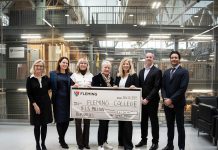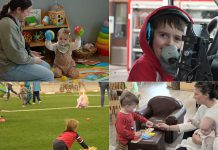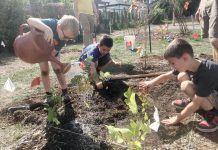
Across Peterborough, students, educators, and community members are digging-in — literally and figuratively — to address two of the most pressing challenges of our time: the biodiversity crisis and the climate crisis.
GreenUP has been working to plant “Little Forests” — sometimes called Miyawaki Forests, micro forests, or mini forests — across the community since 2022. This year, over four days in October, four local schools and one backyard enthusiast joined this growing global effort to restore native ecosystems in urban space by collectively planting more than 1,200 native trees and shrubs representing 30 different species.
“Little Forests are not just about planting trees,” says Jenn McCallum, green infrastructure manager at Green Communities Canada (GCC). “They’re about rebuilding the soil food web and restoring ecology in places where it’s been lost. Every handful of soil is teeming with life, and that life is what makes these forests thrive.”
Small in footprint at just 312 square metres in total, these new local Little Forests are mighty in ecological ambition. The Miyawaki method, developed by Japanese botanist Akira Miyawaki, emphasizes planting densely with native species to accelerate forest development. Within just a few years, they become self-sustaining, biodiverse habitats that sequester carbon, cool urban heat, and provide refuge for pollinators and wildlife.
Beneath the surface, an equally vital transformation is taking place. As native trees take root, their symbiotic relationships with soil microbes begin to flourish, creating healthy, vibrant ecosystems that will nourish what is seen above ground for generations.
“It’s a tangible way to teach our students about biodiversity, climate action, and ecology, right here at school,” says Jenn DeMaeyer, principal at St. Paul’s Catholic Elementary School. “Beyond the curriculum, we see it as a gift to the future — creating a denser, healthier ecosystem for generations of students to enjoy, reflect in, and learn from.”
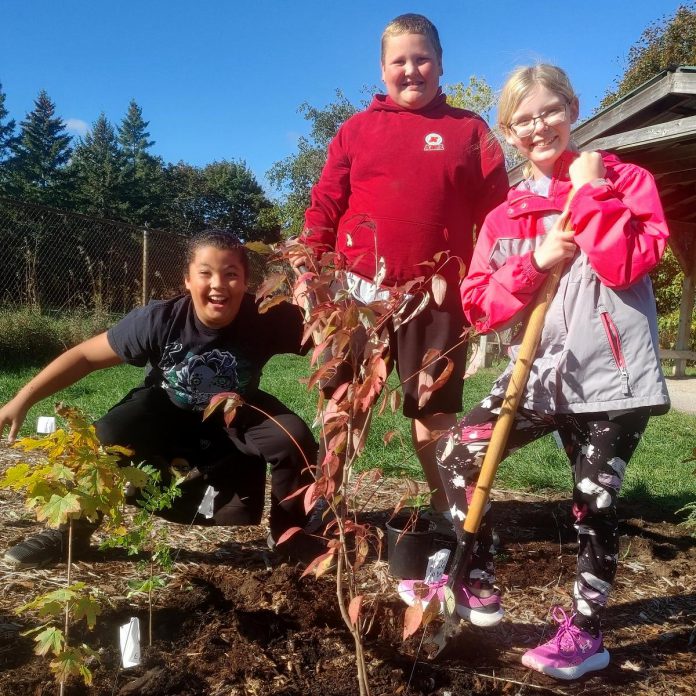
The impact of these forests extends beyond ecology. At each school, planting days became moments of connection, pride, and joy for students and teachers alike. Digging into the soil, choosing a tree, and placing it in the earth gave students a tangible sense of contribution — something deeply nourishing for their development and well-being.
“Coming up with watering and care plans and setting up the protective barrier to keep our new Little Forest safe has been an undertaking taken very seriously by our students,” says Mark Collins, principal at St. John Catholic Elementary School. “Our Ojibwe class has been blessed to use the Ojibwe (plant names and phrases) to match up with the English.”
“Planting our Little Forest brought all classes together for a common goal and left students with a lasting feeling of pride and accomplishment,” says Mary Connolly, participating educator at Otonabee Valley Public School. “We saw students who normally shy away from leadership step up to help younger students and encourage each other. The educational opportunities have been endless, but perhaps the most important was the sense of belonging and contributing to a natural space in their school community.”
At Prince of Wales Elementary School, principal Helen Thompson sees the forest as a foundation for future learning.
“We hope it will eventually anchor an outdoor classroom that supports experiential learning. It’s a chance for students and the wider community to engage directly with nature — observing, questioning, and understanding ecological processes.”
“It is a practical and inspiring way to empower people to care for the planet, starting on our own front lawn,” she adds.
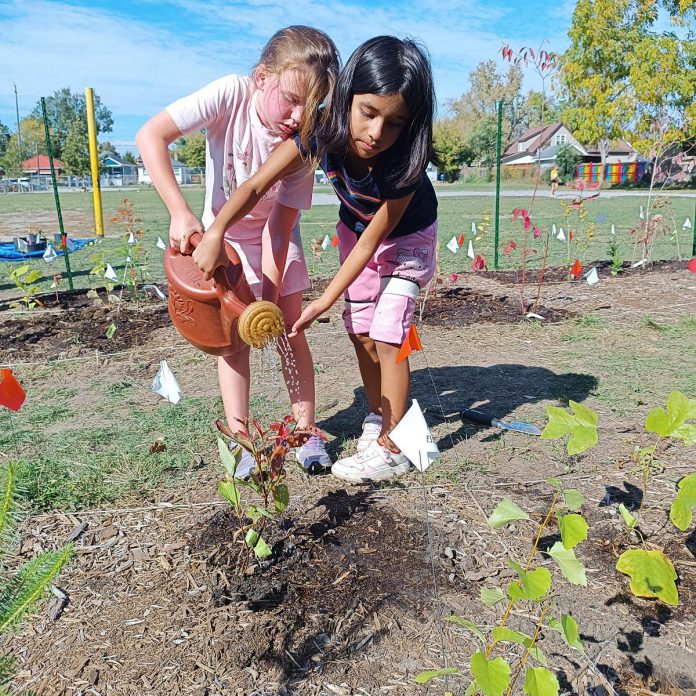
The excitement wasn’t limited to educators.
“I’m so excited to see this tiny forest grow up with my children and provide them the opportunity to explore how trees enrich the soil and provide homes for wild animals, plants, and fungi,” says Benjamin Langer, a Prince of Wales parent.
As these Little Forests begin to grow, so too does a new generation of environmental stewards — curious, connected, and committed to nurturing the natural world. In the soil and in the spirit of these young planters, something big is taking root.
The Little Forests planted at Prince of Wales and Otonabee Valley public schools were generously funded by Trees for Life.
The Little Forests at St. Paul’s and St. John Catholic elementary schools are a part of the Reconciling with the Land program, a partnership between GreenUP, Camp Kawartha, and PVNC Catholic with planting funded by the Ontario Trillium Foundation and Green Communities Canada’s Living Cities Fund.
Do you want to plant your own Little Forest? GreenUP offers Little Forest Kits that include everything you need to get started. Kits will be available in the spring of 2026. Learn more at greenup.on.ca/little-forests-kits/.



